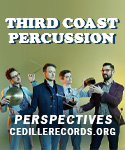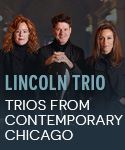This exceptional new recording accomplishes many things at once: it brings a fine American orchestra to disc for the first time on a major label; it offers CD premieres of some excellent unknown music; and most important of all, it imbues Howard Hanson’s work with a stature and significance that previous performances, including the composer’s own, barely suggest.
Start with the symphony. Composed in 1922 in Rome at the conclusion of a period of study with Respighi, the “Nordic” often has been described as a sort of American gloss on the early symphonies of Sibelius. Granted, the thematic material has a certain primal quality characteristic of the great Finnish composer’s style in the 1890s, but there’s very little evidence of Sibelian austerity in Hanson’s warmly sweeping tunes and richly blended orchestration. Indeed the principal theme of the finale bears a striking rhythmic resemblance to the last of Spanish composer Joachín Turina’s almost exactly contemporary (1920) Danzas fantasticas. Furthermore, this First Symphony is if anything even more structurally assured and formally concise than either of Sibelius’ first two. It’s also worth pointing out that in 1922 Sibelius was still working on his Sixth Symphony, having put the finishing touches on his First scarcely 25 years previously, so it would be neither historically correct nor intellectually honest to call Hanson’s late-Romantic tonal musical language anachronistic on account of its theoretically Sibelian antecedents, even if true.
The principal competition for this new recording of the First Symphony comes from the composer’s classic Mercury Living Presence rendition; Gerard Schwarz on Delos offers neither the energy and clarity of Hanson’s own version, nor the warmth and power of this newcomer. Kenneth Schermerhorn’s interpretation is noticeably slower than Hanson’s own–all to the good. While a composer’s views on his own music seldom lack interest, they also rarely reveal all (or even most) of a work’s many facets. So while a general preference for fleetness does minimize the shortcomings of Hanson’s excellent but undersized Eastman orchestra, it also seriously understates his music’s epic sweep and lyrical exuberance. And it’s those qualities that Schermerhorn and his Nashville band realize as never before, so much so that while the actual tempos might be slower, the sense of physical movement, of momentum, is actually far greater, and that makes the music vastly more powerful and exciting than in any earlier recording.
One of the most striking things about this orchestra is its warm, opulent string sound, in evidence not just in the symphony but also in the gorgeous Rhythmic Variations on Two Ancient Hymns for string orchestra. In the Nordic’s quick outer movements, the strings play with a seductive tone and sweeping passion that simply places the music on a higher expressive level than I would have thought possible. And the strings aren’t alone. Listen to the confidence of the brass at the beginning of the finale, to the sparkling percussion in the Merry Mount Suite, or to the soulful solos for English horn, oboe, clarinet, French horn, and trumpet that open the symphonic poem Pan and the Priest. This last item, an absolute stunner of a piece (one that also features an important piano obbligato) ought henceforth to reenter the standard repertoire of orchestras everywhere.
Hanson is one of those composers whose easy musical idiom and success with a single work (the “Romantic” Symphony) make underestimation of his achievement almost inevitable. His very professionalism, the confident orchestral style that always sounds good even in mediocre performances, tends to count against him. His music has acquired a reputation for being “safe” and “foolproof”. Some works by Hanson may indeed come off well when played indifferently, but the real test of their mettle lies in whether or not the music rises to and sustains the call of greatness when taken seriously by a sympathetic conductor and played to the hilt by an enthusiastic orchestra. It’s a test that every single minute of music on this resplendently recorded disc passes with flying colors. An event!
































